Influencer Marketing in Cuba
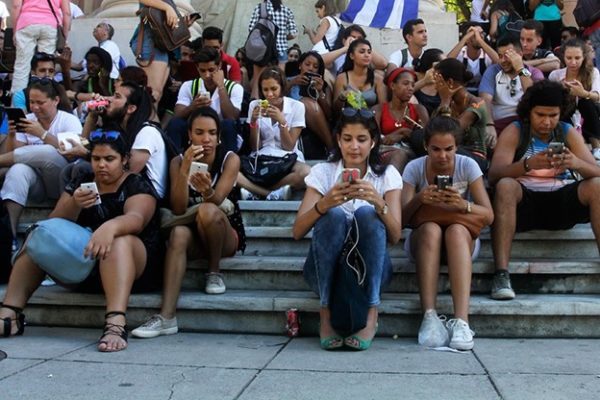
It forms part of Cuban citizens’ digital tools, which gathers information and solutions that are tailored to the situation on the island.
HAVANA TIMES – There is a clear way of identifying an influencer in marketing: it’s somebody with an online audience who they can influence with their actions and purchase decisions.
From this perspective, they are opinion leaders on social media who promote brand, product, and service-related content.
The global influencer marketing industry continues to grow, and it is expected to generate over 16 billion USD in 2022. According to a report by Influencer Marketing Hub, approximately 90% of marketing professionals believe that influencer marketing is effective.
But does it work in Cuba? Mass access to mobile data and the COVID-19 pandemic sped up the growth of influencer marketing in Cuba. New celebrities, brands, content, and social media platforms began to take the spotlight.
Even here, influencer marketing is the most accessible way today for a brand to connect with new audiences.
Is influencer marketing different in Cuba?

Well, yes. Three factors make this kind of marketing in Cuba stand out:
- The first is that the Cuban market is very small, with emerging brands that haven’t fully developed. The private sector is limited and barely has the resources it needs to continue operating most of the time, which forces brands to cast marketing aside, especially if it requires a higher budget like influencer marketing does. Many brands today continue to work without knowing about or working with influencer marketing.
- The second factor has to do with the consequences of the fact that actions linked to business communication, such as publicity and marketing, were banned for many years in Cuba. Even though there has been an opening in this professional sector, Cuban brands still lack real-life experience and national references, which would allow them to expand their theoretical and practical bases for using them in communications and advertising
- Lastly, and this has to do with the appearance of influencers in Cuba, mass Internet access came very late on the island, in December 2018. Digital literacy, knowledge about mechanisms, platforms and coding in the virtual world are some of the unfulfilled needs of most online users in the country.
Generally-speaking, the boom in influencers and the marketing they engage in has some special characteristics in Cuba, including the fact they don’t all collaborate with brands. On the other hand, their development has been deregulated, unorganized and without a methodology to work in marketing, with agencies or databases that manage this activity.
Best practices adopted
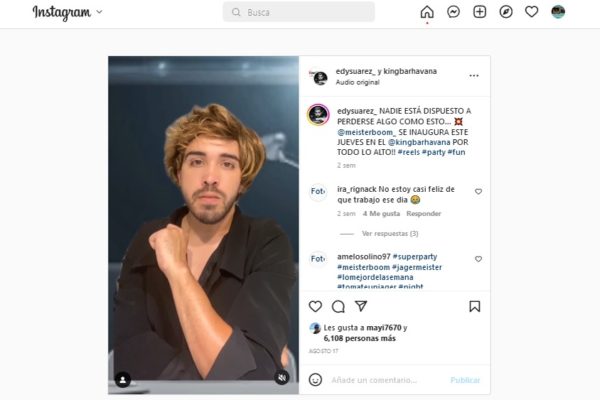
The simplest – albeit questionable – way to identify an influencer is to look at the number of followers they have on a platform. In most cases, this number is proof of their ability to influence.
Although we know that this correlation isn’t always true: you can buy followers and likes, and the power to influence might not be great even with a large following. There are global examples of this, which have shook the influencer empire and marketing linked to it.
In Cuba, this practice of identifying an influencer by the number of followers they have is also widely-accepted by brands and businesses. However, there are growing concerns because of other variables before entering a partnership, including the kind of audience the influencer has (not only the number), their previous partnerships, the quality of comments received, and their credibility in the eyes of their audience.
It’s common to see influencers with a media kit or updated CV with their statistics, type of content, reach and platforms they work on, as well as plans with different prices or kinds of partnership to suit brands’ needs. Those seeking a partnership are also beginning to pay greater attention to these figures and metrics, as tools to predict whether a partnership will bring a return on their investment or not.
The most sensible thing to do would be to attribute this evolution to a world that is moving more and more towards professionalizing the role of influencer marketing, as a highly-complex process that requires experience.
If there is one thing that has had an impact on best practices developed here in Cuba, it’s the education of everyone involved. Professionals, influencers, and brands, seek to increase their skill levels in social media-related aspects, so they can improve their communication on different platforms.
This is also how educational spaces for swapping contacts and training have appeared, such as El Pitch Festival, where foreign and national opinions meet to contribute towards developing marketing in Cuba.
Weaknesses of this kind of marketing in Cuba
Most of this marketing lacks a clear strategy. As marketing itself is normally only seen from an operational point of view, influencers’ work is mediated by improvisation and the lack of a strategic vision that would allow them to reach long-term goals.
Examples of this are one-off partnerships to try and get immediate sales, but they normally don’t bear any fruit. If advertising is contemplated as a short-term strategy, or isolated actions are taken outside of a brands communication strategy, then the chances of failing are higher.
Choosing an influencer without bearing in mind just how much they align with a brand and their mission, is another common reason these partnerships fall through. In Cuba, lots of brands ignore the prior analysis part because they worked well for another brand or because an influencer has a large audience. In consequence to this poor decision, this kind of marketing is then normally ruled out by the brand in question, without analyzing the factors that led to the failure of that concrete action.
Influencer marketing isn’t a lifesaver, in any situation. It doesn’t guarantee success and shouldn’t only be used to attract or sell to an audience. It’s one more strategy that can be used, in conjunction with other marketing and communication actions. It’s important to understand this, because a failure is normally attributed to the influencer they’ve chosen, when in most cases, it has more to do with the partnership process or the brand’s internal strategy.
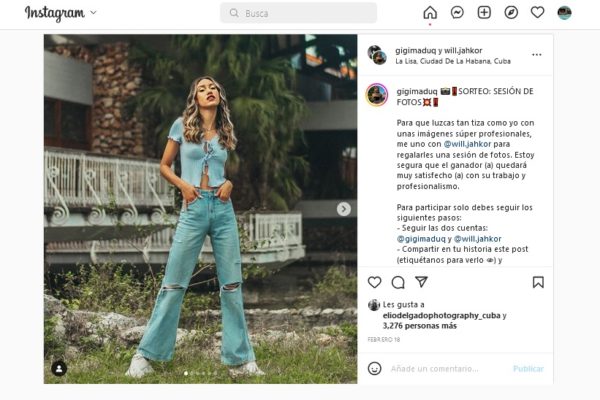
One obstacle standing in the way of influencer marketing in Cuba is that many people don’t know how to reach this sector: When does an online user become an influencer? Where do you find potential influences for a partnership? and How do you choose an influencer that aligns more with your brand?
Specialist agencies in the field or directories that categorize and filter different influencers don’t exist either, making the process more open for brands and professionals.
Last but not least, difficulties gauging the effectiveness of influencers’ actions and the little we know about the subject, continue to limit budget options for this kind of work. Many brands still think this kind of marketing should be free, or possible by exchanging services.
Advertising has never been a cheap business, so a partnership like this needs to be considered valuable first, before it can evolve in the country.
Suggestions for Cuba
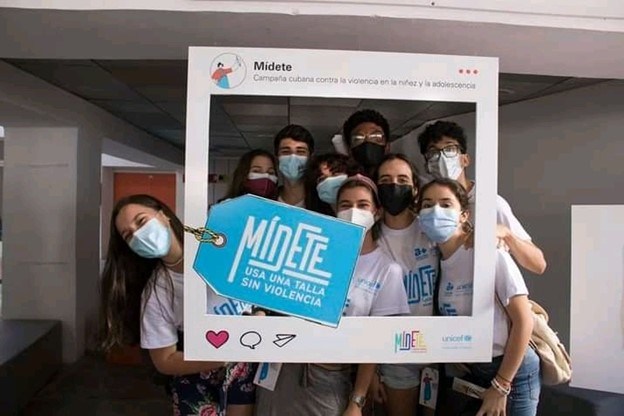
Social media is giving more and more importance to content creators and the value they give every platform.
For that reason, this is the perfect time to invest in strategies that include influencer marketing. That is to say, an influencer’s account will have greater opportunities to grow, organically, thanks to the algorithm of these platforms, than a business or organization’s own account.
A lot of brands around the world are using advertising guidelines to grow their presence on social media (word has it that organic reach on Facebook is pretty much zero, for example, and you can only grow if you pay to promote your posts. Instagram is also reaching this point too, especially because of the sheer number of users on the platform).
However, in Cuba, we continue to use organic marketing, mainly because we don’t have legal access to commercials, and social media platforms haven’t included our region in their market segmentation map. As a result, it’s useless if we want to reach the domestic audience, even we could pay to promote our content.
Thus, influencer marketing is one of the most powerful channels we have to connect with new and potential customers. But just like any other marketing procedure, it needs common sense, professionalism, and strategy, in order for it to be successful.
One of the key ways to get influencer marketing on another level in our country is to develop an innovative mindset when it comes to business, that allows people to see these strategies as healthy investments for brands. Budgets allocated to advertising should be anticipated and used to grow and solidify the organization’s presence.
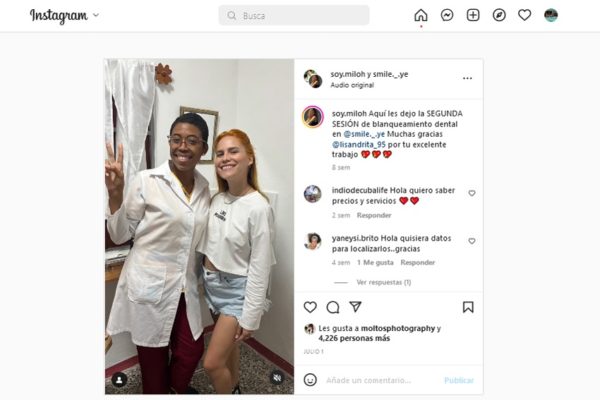
Partnerships with influencers can be short, medium and long-term. Regardless of whether these professionals have their own partnership models or not, it’s important for brands to design their own influencer marketing plan, with an emphasis on:
- How to attract them?
- What kind of influencer accounts can they work with?
- What partnerships are possible?
- What incentives will be given in exchange for every partnership?
- How will results be measured?
- What legal regulations need to be complied with?
Describing this process will allow brands to delegate responsibilities and make it clear what they want in line with their business culture, values, and interests. Plus, it will hike up the chances every one of these actions is successful.
In other words, influencer marketing needs to become formalized as a profession in Cuba, from a legal standpoint, in brands communication and influencers’ own work on social media platforms.





